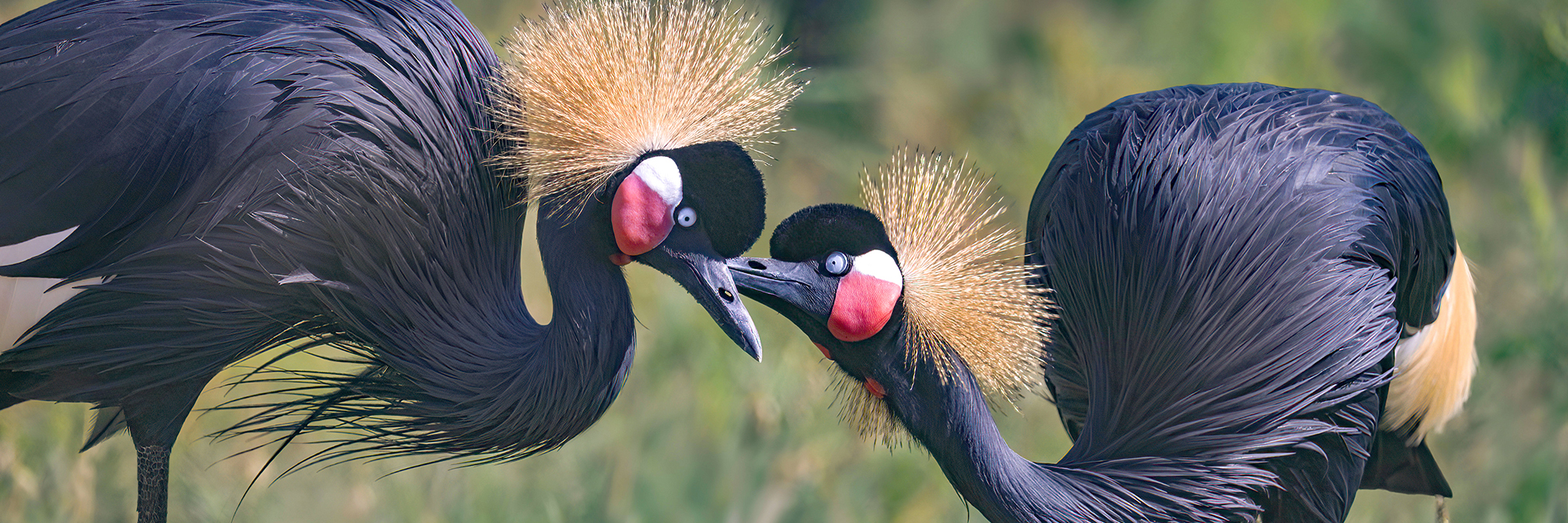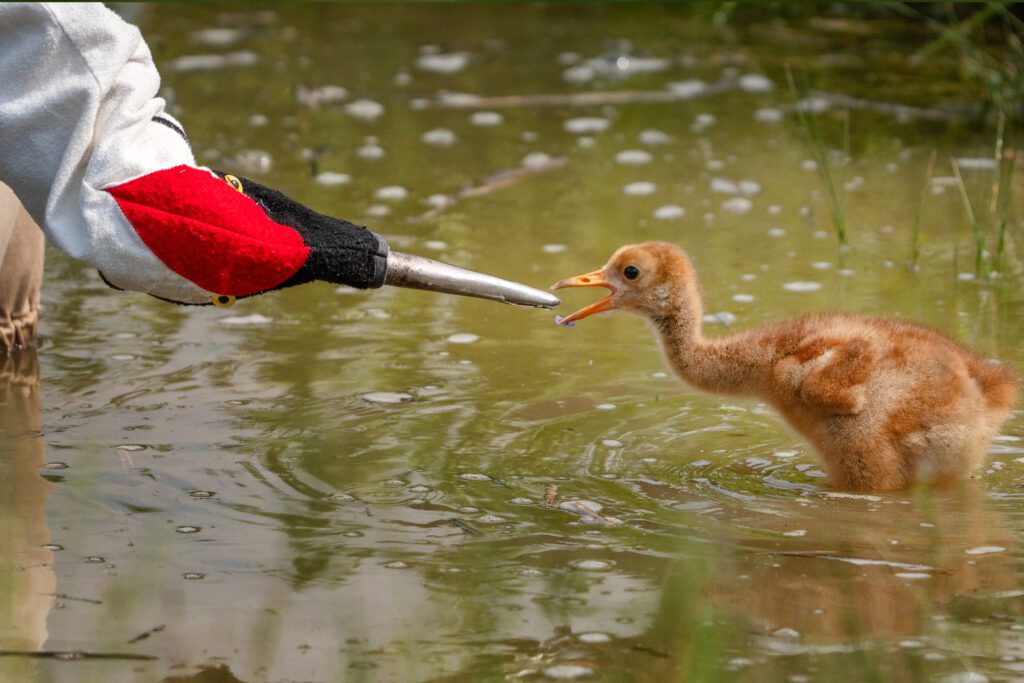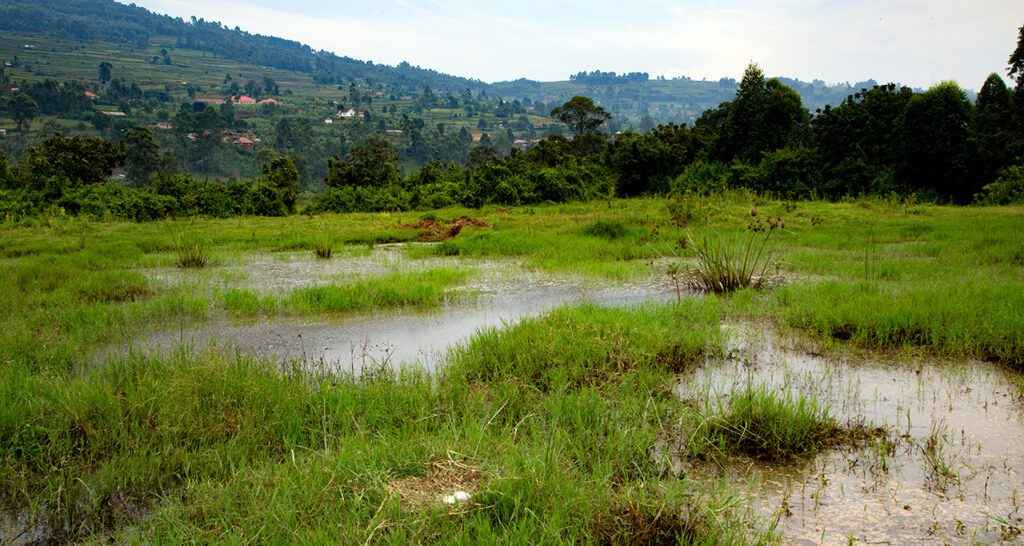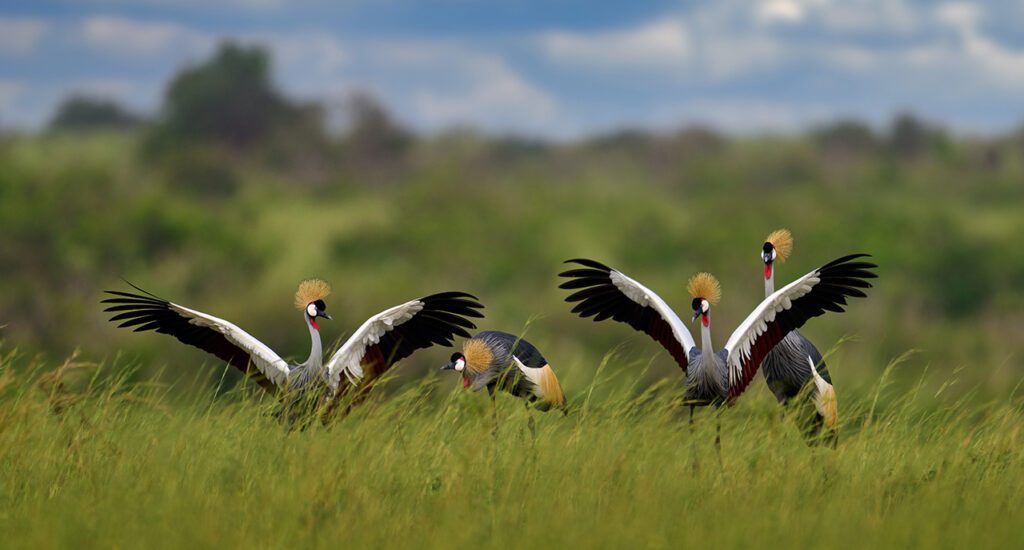

Africa
About Our Work
Africa is an immense continent, with highly threatened crane populations in more than 20 countries. The struggle for socio-economic development across the continent puts enormous pressure on wetlands, grasslands, and agricultural lands that sustain cranes and other wildlife. To achieve our vision, we aim to fully integrate our crane and biodiversity conservation approaches with the welfare of the communities that share their lands with cranes. Our work builds community resilience in a changing political, climatic, economic, and social world and promotes sustainable land-use practices that benefit people, cranes, and broader biodiversity.
We are working to reverse the decline of all four threatened crane species that are resident in the continent—Endangered Grey Crowned Cranes and Vulnerable Wattled, Black Crowned, and Blue Cranes—by reducing the most serious threats to these species and securing their most important breeding, foraging, roosting, and non-breeding grounds. We are also monitoring migratory Demoiselles and Eurasian Cranes to ensure their wintering grounds in northern Africa remain secure, while our conservation efforts in Eurasia aim to reduce hunting pressure for these species along their Middle East/Central Asia flyway.
Photo: Black Crowned Crane pair by Ted Thousand

As we reflect on another amazing year of crane conservation, we are highlighting some of our favorite photos from the field.

In Uganda, natural ecosystems, especially wetlands, face growing threats from climate change, deforestation, and unsustainable land-use practices such as wetland conversion and sand mining. These pressures have reduced both agricultural productivity and biodiversity.

This successful approach to conservation will be shared by Kerryn Morrison, the International Crane Foundation/Endangered Wildlife Trust Partnership’s Vice President of Africa Programs, during the 9th Session of the Meeting of the Parties of the African-Eurasian Migratory Waterbird Agreement (AEWA MOP9) held from November 11-14 in Bonn, Germany.